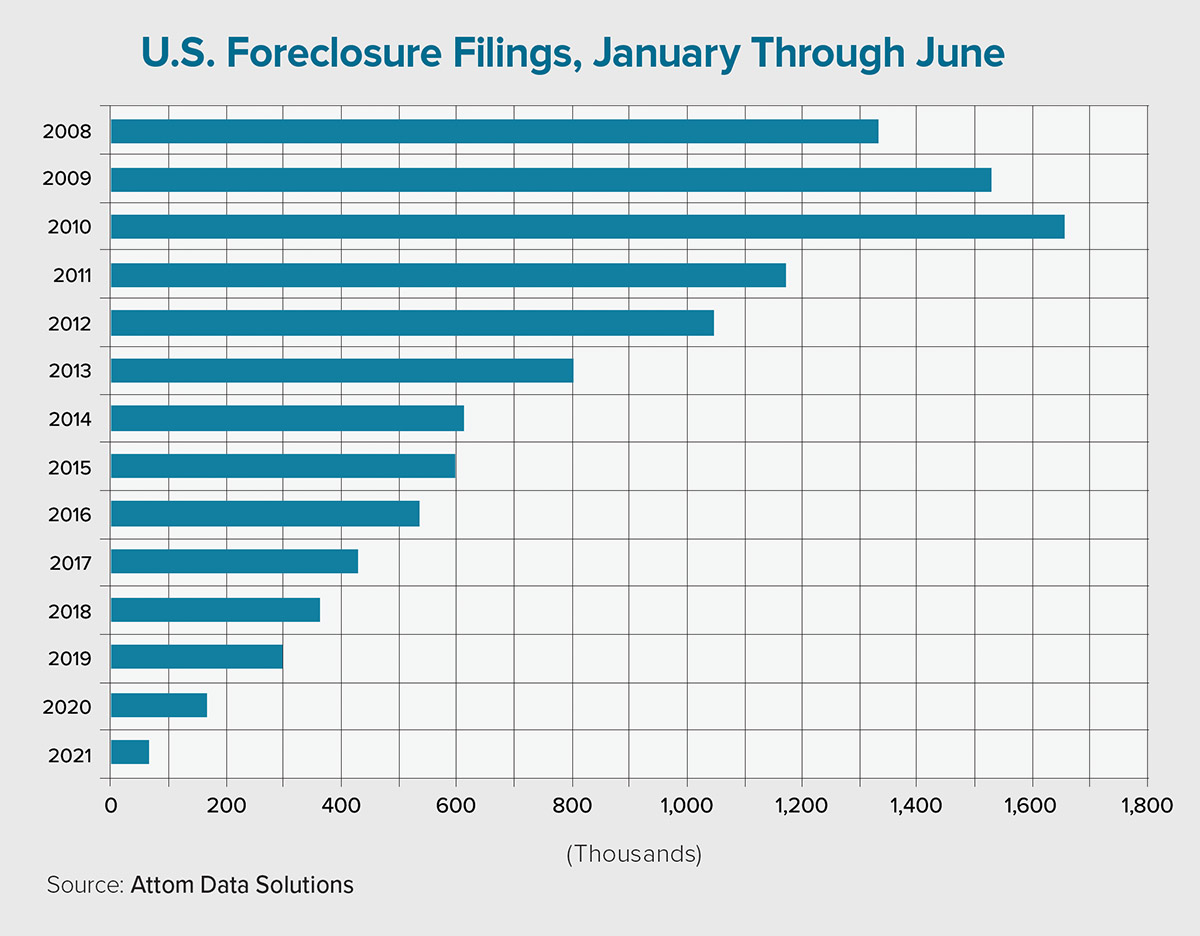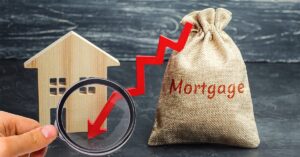Recent developments have made it easier to estimate when the backlog of distressed mortgages built up during the COVID-19 pandemic will be released into the housing market. This backlog has grown primarily as the result of two nationwide foreclosure protections that have already been phased out or are in the process of doing so: a no-documentation forbearance program for all government-backed mortgages and a foreclosure moratorium on government-backed mortgages. Many lenders also have adopted these safeguards for privately held mortgages.
More than 900,000 mortgages in forbearance are scheduled to reach the end of their maximum 18-month term before the end of 2021, according to estimates from Black Knight. The foreclosure moratorium, meanwhile, ended this past July and has been replaced with a revised mortgage servicing rule from the Consumer Financial Protection Bureau (CFPB). This rule, which was scheduled to take effect Aug. 31 and expires at the end of this year, puts in place temporary procedural safeguards that will effectively postpone many foreclosure proceedings until at least 2022.
The CFPB’s revised rule is not a blanket moratorium. It includes some important exceptions, including mortgages that were seriously delinquent prior to the pandemic; mortgages secured by abandoned properties; mortgages secured by investment properties or second homes; and cases where the borrower is unresponsive to servicer-outreach efforts. Given these exceptions, the CFPB rule provides a framework for servicers to gradually release the foreclosure backlog that has built up over the past 18 months.
For many in the mortgage and housing markets, this steadily rising tide of foreclosure activity will be preferrable to the tsunami that could have occurred if the moratorium had abruptly ended without the bureau’s rule in place. The exceptions in the CFPB rule also serve as a template for sizing and timing the steady rise of foreclosure activity over the next several months and years.
The first tide of foreclosure activity will come from the backlog of mortgages that were classified as seriously delinquent (90 or more days past due) prior to the pandemic. At the end of this past March, there were about 600,000 mortgages in this category, of which about 400,000 were protected from foreclosure by active forbearance or loss mitigation, according to Black Knight. The remaining 200,000 loans represented the first wave of pent-up distress likely to start or restart the foreclosure process once the moratoriums expired in July.
Another 325,000 seriously delinquent mortgages at this time were in active loss mitigation or were post-pandemic delinquencies not in forbearance, Black Knight reported. These will drive the second wave of pent-up foreclosures, which is likely to arrive in the first half of 2022. Although the second wave is potentially larger than the first, it’s likely that a smaller share of the second wave will actually make it to shore (i.e., start the foreclosure process) given the foreclosure-prevention lifeline represented by the loss-mitigation process.
This pattern is repeated in the third wave of pent-up foreclosure activity to roll in after the lifting of moratoriums. This wave will be driven by about 900,000 mortgages that exit forbearance in the second half of 2021. While some of these loans will go directly back into default with no loss mitigation, the vast majority are likely to enter the loss-mitigation waterfall. They will eventually migrate into a long-term foreclosure-prevention solution (such as loan modification) or will fail loss mitigation and start the foreclosure process.
Together, these three waves add up to nearly 1.5 million potential foreclosure starts flowing from the backlog of distress that was dammed up over the past 18 months by foreclosure moratoriums and forbearance programs. Assuming that home-price appreciation remains positive, however, a diminishing share of this pent-up distress will start the foreclosure process as the successive waves roll in, and an even smaller share will complete the foreclosure process.
Foreclosure filings reached a historic low point of about 65,000 during the first six months of this year, according to Attom Data Solutions. This was down 61% compared to the first half of 2020.
If 25% of these 1.5 million potential foreclosure starts actually complete the process — which is the average ratio of completed foreclosures to seriously delinquent mortgages over the past decade — it would result in an additional 375,000 foreclosures. These homes would be added to the “business as usual” foreclosures that occur even in a healthy housing market (about 250,000 per year based on 2019 numbers) and would likely be distributed over the next three to four years. ●
Author
-

Daren Blomquist is vice president of market economics at Auction.com. In this role, Blomquist analyzes and forecasts complex macroeconomic and microeconomic data trends to provide value to both buyers and sellers using the platform. Blomquist has been cited by thousands of media outlets nationwide, including major news networks, The Wall Street Journal, The New York Times and USA Today. Prior to Auction.com, Blomquist worked at Attom Data Solutions.
View all posts






